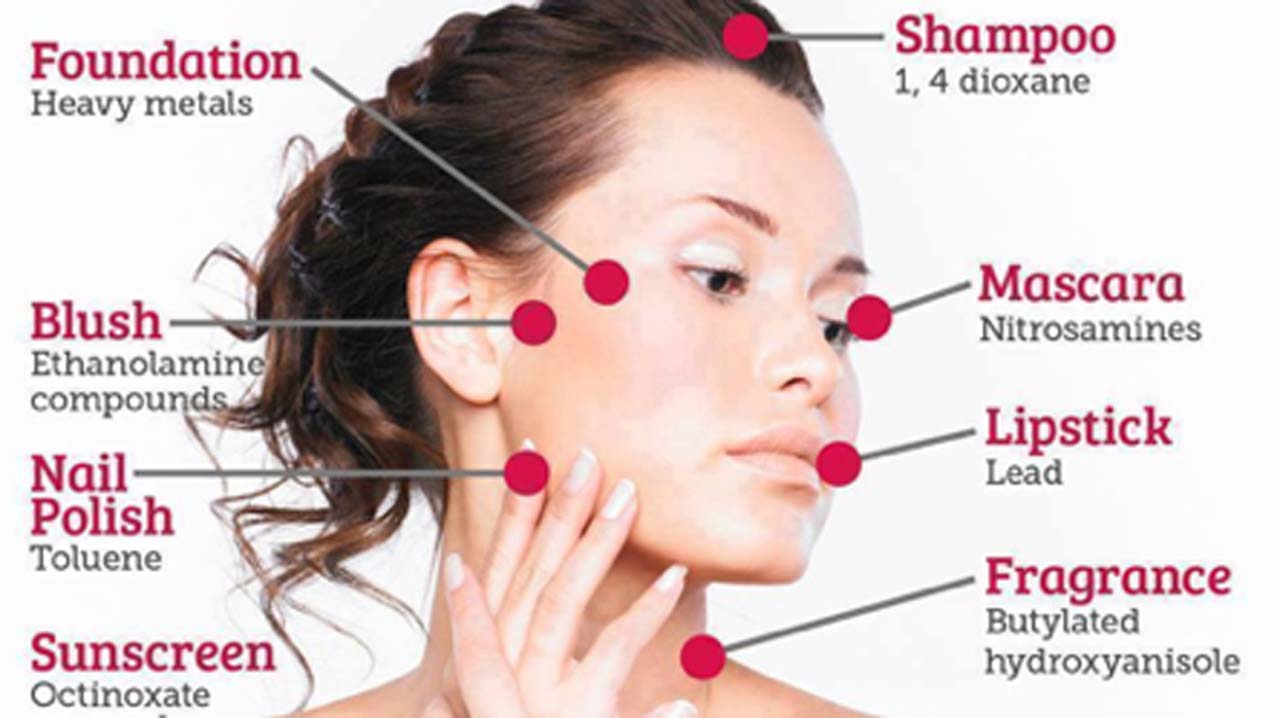
Scientists have discovered how a group of chemicals in everything from shampoo to booze can cause cancer.
The chemicals, known as aldehydes, are made in our body in tiny amounts and can be found everywhere in our environment.
Too much exposure to aldehydes, however, causes cancer by breaking down our ability to fix Deoxy ribonucleic Acid (DNA)/genetic material, a new study has found.
Aldehydes are made in our body in tiny amounts and can be found everywhere in our environment. They used regularly in cosmetics and other products can exacerbate a faulty BRCA2 gene. Aldehydes are also found in car exhausts, smoke and building materials.
Those with the faulty gene are more at risk of developing breast, ovarian, prostate and pancreatic cancer.
Professor Ashok Venkitaraman, lead author of the study from the University of Cambridge, said: “We knew aldehydes were not nice and have been linked to cancer, but we did not know they damage proteins in the cells important for preventing the DNA damage which causes cancer.
“We don’t know how much of these chemicals we are breathing in or how long they last in the air after being produced, but aldehydes are found all over the place.”
Nose and throat cancer are particularly linked to formaldehyde, a colourless, strong-smelling gas which is used in embalming.
The study, published in the journal Cell, used genetically-engineered human cells to identify how aldehydes from pollution and other sources could cause cancer.
Researchers found the chemicals break down defence mechanisms in normal, healthy cells which help repair the damage to DNA when they divide.
Venkitaraman explained that the body has two copies of the BRCA2 gene.
This gene produces a protein that helps repair DNA damage. If this damage is not repaired it can develop into cancer.
Also, a leading United Kingdom (UK) breast cancer charity has warned that levels of endocrine disrupting chemicals contained in popular beauty products may increase women’s risk of developing the disease.
And the chemicals being highlighted by Breast Cancer UK appear in the ingredients on everything from Nivea moisturisers and Maybelline mascaras to Essie nail polish.
The charity’s Ditch The Junk campaign aims to raise awareness of the chemicals that people might wish to avoid, such as parabens, which are widely used as preservatives, and synthetic musks like galaxolide, commonly found in perfumes.
It has also released a handy infographic breaking down common ingredients in products from nail polish to hair spray to hygiene products, to arm shoppers with everything they need to know before their next trip to the beauty counter.
Also, a new research suggests exposure to chemicals found in shampoos and toys during early childhood may seriously damage the mental development of youngsters.
Girls with high concentrations of certain chemicals, known as phthalates, in their blood have lower levels of a thyroid hormone, a study found.
Study author Pam Factor-Litvak of Columbia University, said: “The thyroid acts as the master controller of brain development.
“Thyroid hormones set the schedule, and if the timing is out of synch, there may be later consequences in the brain.”
Previous research suggests up to 70 percent of the products we apply to our skin gets absorbed into our bloodstream, with our scalps having one of the highest absorption rates of anywhere on our bodies.
Phthalates are thought to mimic hormones, particularly estrogen, leading to hormonal-disruption driven disorders.
Also, Breast Cancer UK has warned hormone-disrupting chemicals in popular beauty products may increase women’s risk of developing the disease.
The cancer-causing ingredients are included in everything from Nivea moisturisers and Maybelline mascaras to Essie nail polishes.
The charity’s ‘Ditch The Junk’ campaign aims to raise awareness of the chemicals that people may wish to avoid, such as synthetic musks like galaxolide, which are commonly found in perfumes.
Another chemical, known as parabens, are used as preservatives to stop products going off, but they have no cosmetic function.
Their chemical structure is similar to oestrogen, meaning they can mimic the impact of the hormone in the body.
Research by the Silent Spring Institute in Massachusetts found even in low quantities, parabens increase the growth of breast cancer cells in lab tests.
Researchers at Columbia University assessed the link between phthalate exposure and thyroid function in children over time.
They measured five phthalates and two thyroid hormones from 229 pregnant women and 229 three-year-olds enrolled in the Mothers and Newborns Study at the Columbia Center for Children’s Environmental Health.
Results, published in the journal Environment International, revealed girls with lower levels of a thyroid hormone, known as FT4, had higher amounts of four common phthalates in their blood.
Pam Factor-Litvak said: “The thyroid acts as the master controller of brain development.
“Thyroid hormones set the schedule, and if the timing is out of synch, there may be later consequences in the brain.
“The thyroid disruptions we see in this study, although they fall within the normal range, could explain some of the cognitive problems we see in children exposed to phthalates and we are currently investigating that. As we know from lead, even small exposures can make a big difference.
“Parents with young children should avoid using products containing phthalates such as shampoos, nail polish, and vinyl flooring.”
In the study, thyroid disturbances did not occur to the same extent in boys, which may be due to past research that suggests phthalates mimic estrogen in particular.
Previous studies have shown phthalate exposure in pregnancy is associated with a lower IQ, asthma and mental and motor development problems in young children.

No comments:
Post a Comment